Cycling in the Dolomites: when to go, where to stay and ride
Take on the jagged mountain climbs of the Dolomites and enjoy awe inspiring views this summer
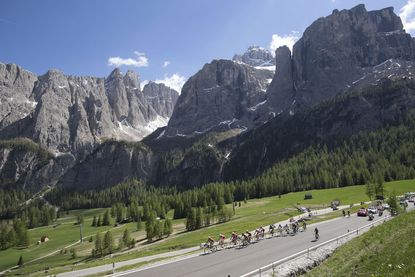
Spectacular scenery for the riders to enjoy on stage 18 of the Giro d'Italia as the race passes through the Dolomites

Ride in the Dolomites, and the resulting profile will nearly always be comparable with the jagged pearly whites of an alligator's toothy smile.
If there's one thing a Dolomiti ride will never, ever be - it's boring. The northeastern Italian mountains are characterised by an all or nothing attitude - either presenting an upward struggle or a long, freewheel worthy downward slope. There isn't a lot of flat, or certainly not that we've found.
The mountains - part of the Southern Limestone Alps - are spread across three Italian provinces: Belluno, South Tyrol and Trentino.
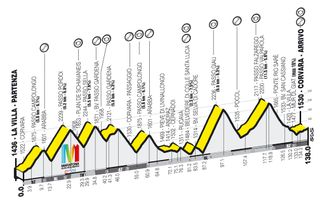
There's an array of striking climbs within the UNESCO World Heritage site. However, there's still more just outside the border of what is technically the Dolomites. Giants such as the Stelvio, Gavia and Mortirolo are often considered a part of this climber's paradise due to their proximity.
Why go to the Dolomites?
If you love climbing, and aren't a big fan of flat expanses, then the Dolomites could be for you. Even if you're not a huge fan of going up, then the exquisite views offered by the region should be enough to quieten any inward moans.
Get The Leadout Newsletter
The latest race content, interviews, features, reviews and expert buying guides, direct to your inbox!
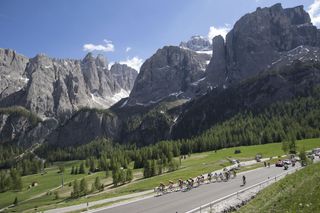
The testing nature of these up-and-down roads means it doesn't take an awful lot of miles to get an incredibly good workout in, too - so you won't need to go too far to get your fix.
Many pockets of tourism - such as the ski resorts - are incredibly keen to encourage cycling in the area and you'll find velo-friendly hotels, hire, maintenance and related services easy to locate.
If you dabble (or indeed specialise) off-road, there's a fair amount of mountain biking available too - with prestigious MTB events as well as road and a flourishing e-bike market attempts to draw in those otherwise put off by the terrain.
When to go to the Dolomites?
The Dolomites boast excellent riding weather from May to October, with lower levels of precipitation that other areas on the Alps - particularly the northern Dolomites as the southern Dolomite mountains tend to break up the bigger storms. The average rain days vary from four to 10 a month, with May being the wettest in the calendar.
Maximum temperatures (on the valley floor) vary from 19 to 29°C from April to October. The hottest months are June and July, with maximum of 28-29°C - but once you get up high even on these days the heat should still be at a welcome level of warm.
If you're after quieter roads, May, September and October are often considered to be your best bet.
Winter sports typically kick off from December to March and even April - so obviously these months are best avoided.
Where to stay in the Dolomites?
With a selection of ski resorts taking home in the mountains, it should be easy enough to find accommodation plus places to eat in the evening.
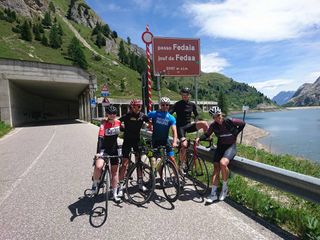
In the past, I've stayed in Alta Badia - the South Tyrol ski resort with a central position in the mountains, that promises close proximity to a plethora of climbs.
The central town of the area is Corvara - and it's known as one of the ideal bases for those planning to tackle the prestigious Sella Ronda route.
A popular alternative is Cortina d'Ampezzo - another ski resort which is nestled in an alpine valley, and on the Boite river.
Much of the area was under Austrian possession until 1920 - and the architecture harks back to this period - with steep slatted roofs and wooden chalets. The official language here is Ladin.
Whilst you're in this part of the world, it might be worth taking a day trip to Treviso - the home to a hefty percentage of cycling's industry, including Pinarello, Sidi, Campagnolo, Selle Italia and Fizik.
Closer to the border of Switzerland, you'll find another group of Alpine mountains - the Stelvio (21km, seven per cent), and its lesser used side the Umbrail Pass (13km, eight per cent), the Gavia (17.3km, 7.9 per cent) and Mortirolo (14.3km, 8.3 per cent) being the most famous.
Not technically a part of the Dolomites, just over 150km separates the two areas - so if you're able to travel, then splitting your trip between the two regions can allow you to tick of even more of cycling's most prestigious ascents.
Visiting these giants, I've used Bormio as a base - Hotel Vallecetta to be precise. The town hosts the Alpine Ski World Cup on an annual basis, and played home to the Alpine World Ski Championships in 1985 and 2005.
Bormio is wedged between the Stelvio and Gavia - indeed you can climb one, descend back to base and make your way up the other if you don't fancy a long loop.
Where to ride in the Dolomites?
One of the most famous circuits in the area is the Sella Ronda loop. At 52km (32 miles) it might sound easy, but that covers 1,700 metres of climbing (5577 feet).
The route takes in a selection of iconic passes - the Gardena (9.3km at 6.4 per cent), Sella (5.5km at 7.9 per cent), Pordoi (13km at six per cent) and Campolongo (5.8km at six per cent). Of course, if it's not far enough, there's nothing stopping you completing more than one lap.
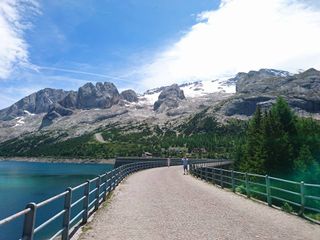
Not on the route, but absolutely worth exploring is the Fedaia climb. From Caprile, it comprises of 14km, with an average at 7.6 per cent, though there are grades as high as 18 per cent along the way.
Though the Fedia is considered by many to be the hardest climb the Dolomites has to offer, it also provides striking views of the hairpins, valleys and adjacent mountains stretching far below, or above you (depending how far up you happen to be before you actually look up and take in your surroundings).
If you're staying in the shadow of the Stelvio's homeland, then one must-ride is a loop that allows you to climb the Bormio side of the ascent plus the Umbrail Pass - there's a GPX route here.
Alternatively, you can go a bit 'out and back' and climb the Stelvio and Gavia from Bormio and gain a lot of feet in not very many miles.
Events in the Dolomites
With a wealth of exceptional riding terrain in the region, in recent years local tourism boards have come together to create some dedicated cycling events to join the existing host of already well known sportives.
Sella Ronda bike day first took place in 2005. Now drawing over 20,000 riders annually, it's a day in which the 30 mile loop is closed to cars so that cyclists of all kinds can enjoy the passes.
The inclusive event attracts everyone from hardened road riders to (incredibly hardy!) parents with cargo bikes, e-bike riders and beginners on hybrid bikes.
The event - which takes place in June each year - has been bolstered with the newly added Dolomites Bike Day.
Organised, in part, by the Alta Badia tourism office, the route covers 57km/36 miles - all closed to traffic from 10am to 3pm. Passes include the Campolongo, Flazarego and Valparola - adding up to 1390 metres (4500ft) of climbing.
For those seeking a greater distance, there's the big one: the Maratona des Dolomites.
There's three distances on offer, the longest being 138km (85 miles) with 4230 metres (13,877 feet) of climbing. The route takes in the most challenging and dramatic of the areas climbs, and was established in 1987.

Thank you for reading 20 articles this month* Join now for unlimited access
Enjoy your first month for just £1 / $1 / €1
*Read 5 free articles per month without a subscription

Join now for unlimited access
Try first month for just £1 / $1 / €1
Michelle Arthurs-Brennan the Editor of Cycling Weekly website. An NCTJ qualified traditional journalist by trade, Michelle began her career working for local newspapers. She's worked within the cycling industry since 2012, and joined the Cycling Weekly team in 2017, having previously been Editor at Total Women's Cycling. Prior to welcoming her daughter in 2022, Michelle raced on the road, track, and in time trials, and still rides as much as she can - albeit a fair proportion indoors, for now.
-
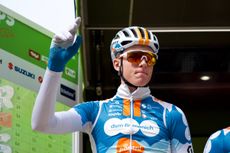 'It's a surreal experience' - Meet the British teenager racing with his heroes
'It's a surreal experience' - Meet the British teenager racing with his heroesOli Peace is stepping up in his first pro race at the Tour of the Alps
By Tom Davidson Published
-
 A closer look at the 'disruptive' Ribble Rebellion crit bike: part artwork, part race machine
A closer look at the 'disruptive' Ribble Rebellion crit bike: part artwork, part race machineThe Ribble Rebellion team is riding an eye-catching bike for 2024, in more ways than one
By Joe Baker Published
-
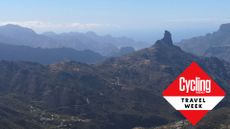 Cycling in Gran Canaria: the diverse island that should be next on your 'to do' list
Cycling in Gran Canaria: the diverse island that should be next on your 'to do' listLooking for a winter getaway? Take a short hop to Gran Canaria where it's spring/summer conditions all year round
By Michelle Arthurs-Brennan Published
-
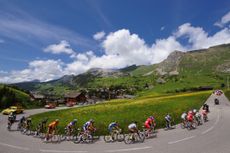 Cycling in Morzine: the next destination to tick off your bucket list
Cycling in Morzine: the next destination to tick off your bucket listNestled against the Swiss border, Morzine offers up a portion of French alps climbing with a side of off-bike resort entertainment
By Michelle Arthurs-Brennan Published
-
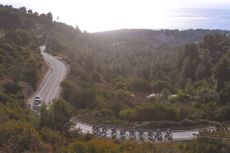 Cycling in Costa Blanca: a cyclist’s guide to Denia and Calpe
Cycling in Costa Blanca: a cyclist’s guide to Denia and CalpeLooking for a spring getaway? Mainland Spain's coastline could be the answer...
By Michelle Arthurs-Brennan Published
-
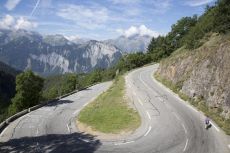 How to climb that iconic mountain, the one you’ve dreamed of
How to climb that iconic mountain, the one you’ve dreamed ofFor cyclists, there always seems to be one climb that has eluded them, and which figures highly in the imagination.
By Richard Windsor Published
-
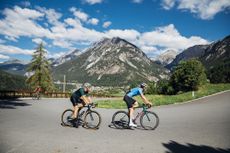 What can cyclist legally do, and not do, in Europe?
What can cyclist legally do, and not do, in Europe?Planning a trip abroad? Here's what you need to know about the law in top European destinations
By Michelle Arthurs-Brennan Published
-
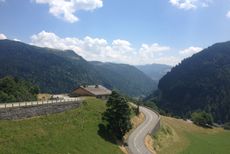 The best quick transfer destinations for your short break cycling holiday
The best quick transfer destinations for your short break cycling holidayGoing for a quick getaway? Here are some suggestions...
By Michelle Arthurs-Brennan Published
-
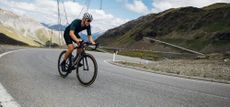 Riding to the sky above: Taking on the Passo dello Stelvio
Riding to the sky above: Taking on the Passo dello StelvioThe highest summit finish in Grand Tour history... Paul Knott headed to the Passo dello Stelvio to tick this bona fide bucket-list climb off his list
By Paul Knott Published
-
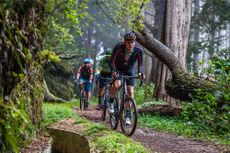 Is Madeira the ultimate adventure destination?
Is Madeira the ultimate adventure destination?If you like climbing, you’ll love Madeira
By Paul Norman Published